Table of Contents
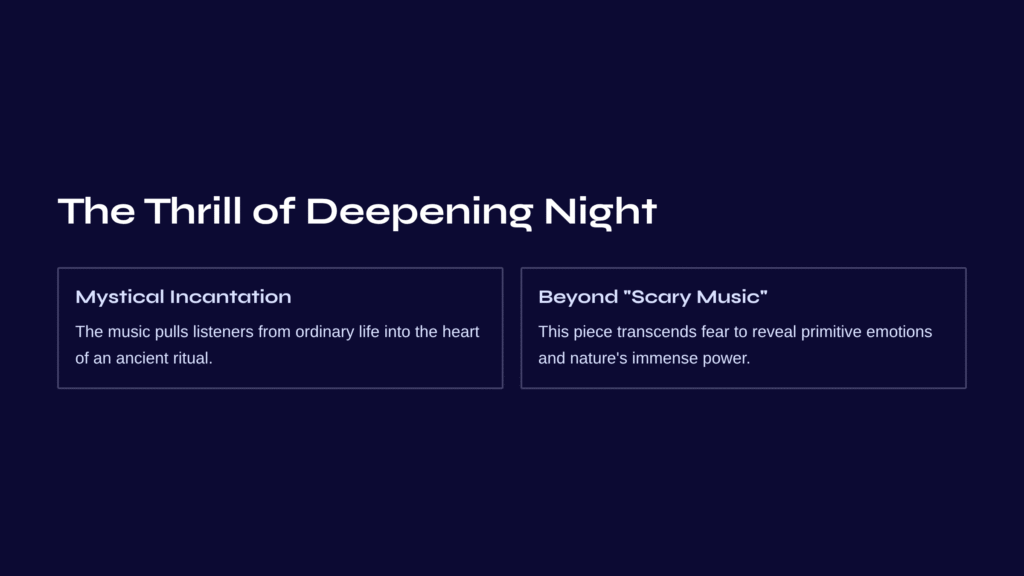
The Thrill of Deepening Night
When darkness descends, we suddenly feel an inexplicable fear accompanied by a strange excitement. This very emotion is woven into the fabric of Mussorgsky’s ‘Night on Bald Mountain.’ I cannot forget the thrill I felt when I first heard this piece. Like an incantation chanted by an ancient shaman, the moment the music began, I was pulled away from ordinary daily life into the very heart of some mystical ritual.
A barren mountain standing alone on Russia’s vast landscape. This work, which paints the fantastical nocturnal scenes unfolding there in musical colors, transcends far beyond the superficial impression of merely being “scary music.” Here unfolds the most primitive human emotions, nature’s immense power, and the infinite world created by imagination.
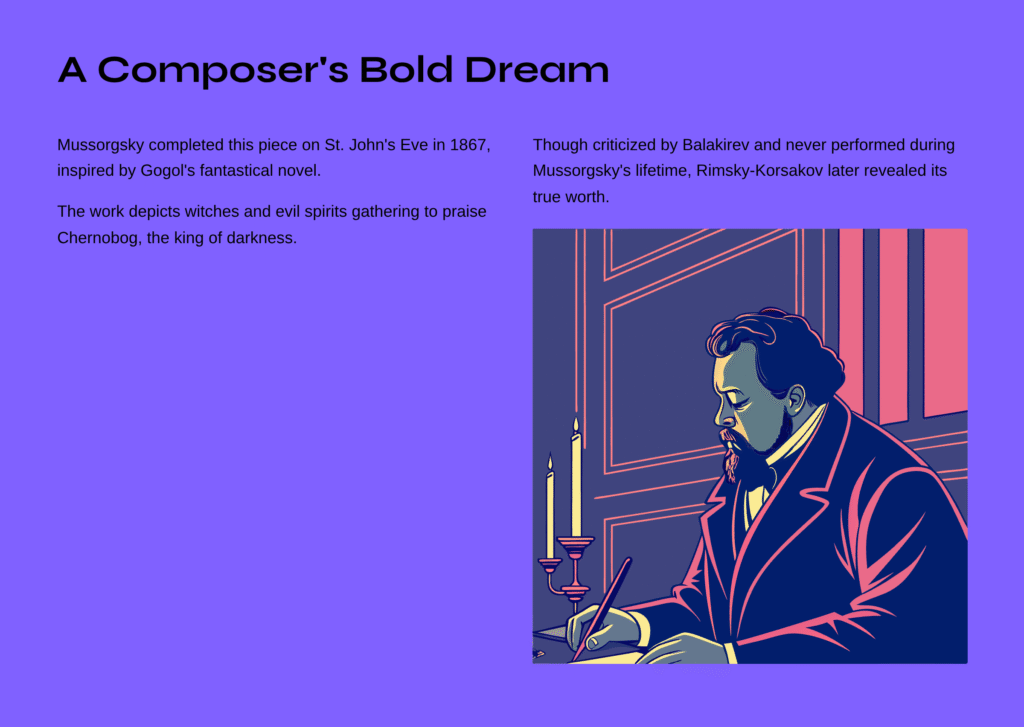
A Composer’s Bold Dream
When Modest Mussorgsky completed this piece on St. John’s Eve in the summer of 1867, he was probably unknowingly erecting a monument in music history. Inspired by Nikolai Gogol’s fantastical novel, this work is based on a legend that unfolds annually on the night of June 24th on a bald mountain called Trihorph near Kiev.
In the legend, this night is when witches and evil spirits gather to hold a feast praising Chernobog, the king of darkness. Mussorgsky accomplished the remarkable task of translating such folk imagination into the abstract language of music. However, Balakirev, leader of the Russian Five at the time, harshly criticized this innovative work, and it suffered the misfortune of never being performed during Mussorgsky’s lifetime.
But true art reveals its value only with the passage of time. After Mussorgsky’s death, his colleague composer Rimsky-Korsakov re-orchestrated this work in 1886 and brought it to the world, finally allowing its true worth to be revealed.
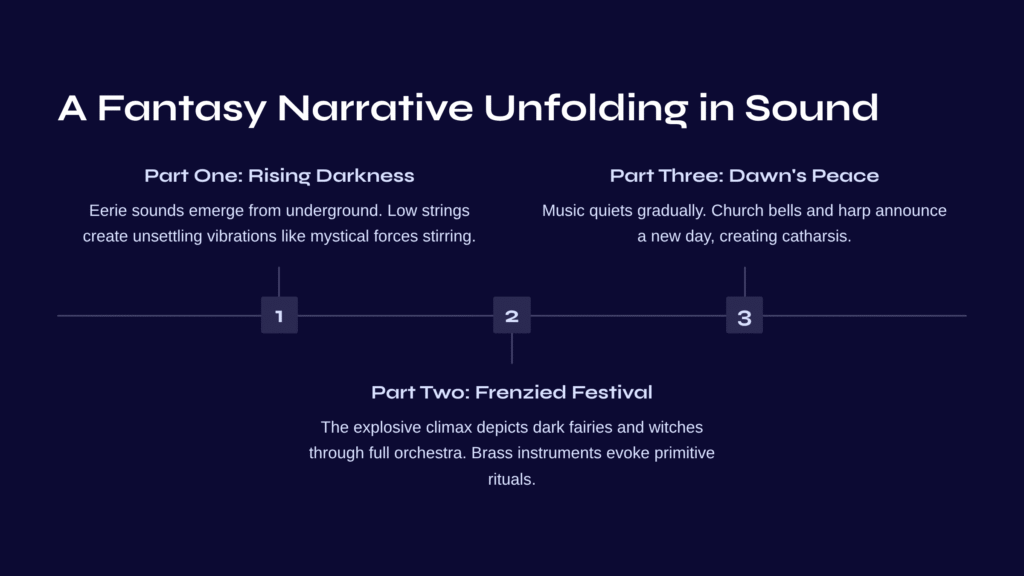
A Fantasy Narrative Unfolding in Sound
‘Night on Bald Mountain’ is a single-movement symphonic poem, yet within it lies a dramatic structure hidden like a scene from an opera. The piece can be broadly divided into three parts.
In the first part, we hear eerie sounds rising from underground. The unsettling vibrations created by low strings seem as if something is writhing and ascending from deep within the earth. The sound here is not simply “frightening,” but rather makes us sense the stirring of some unknowable mystical force. The sight of woodwinds drawing bizarre melodies over the deep, dull resonance of timpani is like the forms of fantastical beings gradually revealing their silhouettes in the darkness.
The second part is the most intense climax of the piece. The frenzied festival performed by dark fairies and witches is expressed through the explosive sound of the full orchestra. The melody shouted by brass instruments over the sharp tremolo of strings evokes primitive-era rituals. Whenever I listen to this part, I always feel the awakening of the wildness sleeping in the deepest part of humanity – that primordial life force still living and breathing within our civilized selves.
In the third part, Rimsky-Korsakov added the peace of dawn that wasn’t in the original. Like awakening from a nightmare, or like a long night’s ritual coming to an end, the music gradually becomes quiet. The church bell sounds heard along with the clear resonance of the harp announce the beginning of a new day. This contrast gives the music a completed narrative structure while simultaneously allowing listeners to experience deep catharsis.
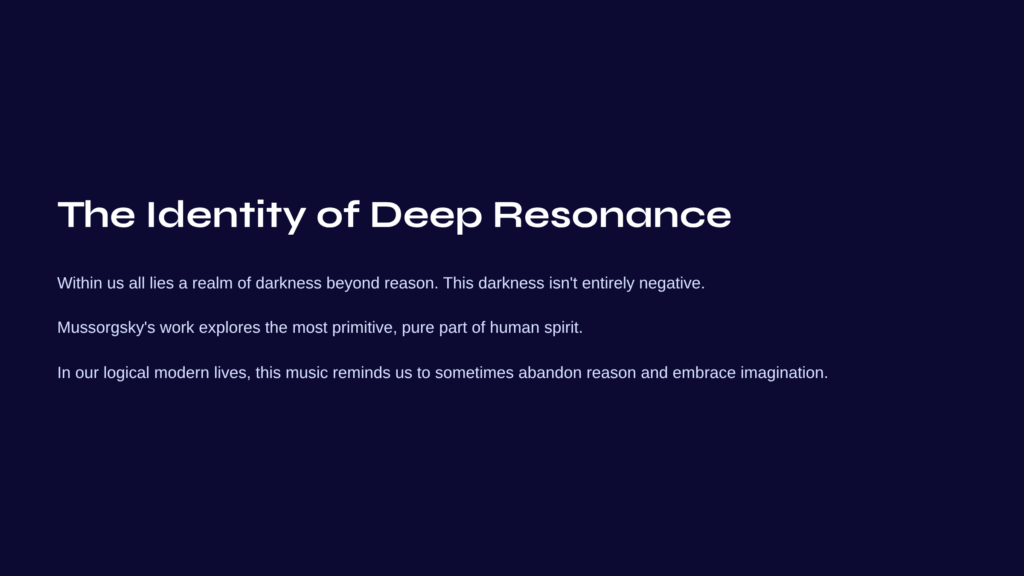
The Identity of Deep Resonance in My Heart
Every time I listen to this piece, I come to one conviction. That within all of us lies a realm of darkness that reason cannot explain, and that this darkness is not necessarily entirely negative. The fantasy of Bald Mountain that Mussorgsky painted is not simple terror, but an exploration of the most primitive and pure part of the human spirit.
Particularly for us living in modern times, this music holds special meaning. In daily life that constantly demands we be rational and logical, this piece presents us with another possibility – that sometimes we need the courage to abandon logic and surrender to intuition, spread the wings of imagination, and face our inner wildness.
Between the rough, raw energy of Mussorgsky’s original and the refined orchestration polished by Rimsky-Korsakov, I always find myself in a dilemma. Which is more precious – preserving primitive power as it is, or pursuing artistic perfection? But perhaps this very dilemma is evidence of the richness this work possesses.

Three Suggestions for Deeper Listening
First, when listening to this piece, try to create as quiet and dark an environment as possible. If you turn off the lights and focus only on the music with your eyes closed, you can have a much more intense experience. It’s also good to try visualizing the images that the music creates in your mind.
Second, if you have the opportunity, try comparing Mussorgsky’s original with Rimsky-Korsakov’s arrangement. Since each has different charms, you can receive completely different emotions from the same work. I recommend performances by conductors like Claudio Abbado or Valery Gergiev.
Third, watching the scene where this music is used in Disney’s ‘Fantasia’ can also be an interesting experience. Although it’s a cinematic interpretation, it will help stimulate the visual imagination of the music.

Timeless Beauty of Darkness
Ultimately, what ‘Night on Bald Mountain’ tells us is a new perspective on darkness. Darkness is not simply the absence of light, but a complete world in itself, and sometimes it can become a source of imagination richer than light itself.
The notes that Mussorgsky drew on staff paper on that summer night in 1867 leap across more than 150 years of time and burn once again in our hearts today. That flame is still hot, still mysterious, still touching our deepest places. Isn’t this the transcendent power of time that true art possesses?
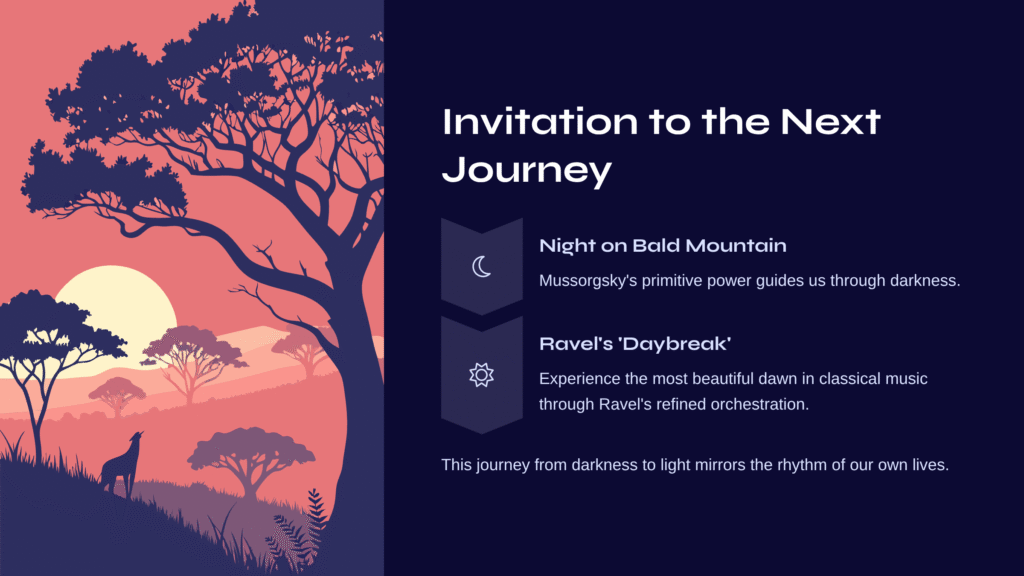
Invitation to the Next Journey: Ravel’s ‘Daphnis and Chloe’ Suite No. 2 ‘Daybreak’
After the intense night on Bald Mountain passes, we naturally come to welcome the beginning of a new day. If Mussorgsky guided us to the world of darkness, now it’s time to encounter the most beautiful dawn painted by Maurice Ravel.
The first part of ‘Daphnis and Chloe’ Suite No. 2, ‘Daybreak (Lever du jour),’ is considered one of the most delicate and sensual dawn scenes in classical music history. This music, painted with Ravel’s characteristic refined orchestration, gives the feeling of peering through a microscope at every moment of nature gradually awakening.
Mussorgsky’s primitive power and Ravel’s impressionistic delicacy. If you listen to these two works connected, you will newly realize how broad the spectrum of emotions that music can express truly is. This musical journey continuing from darkness to light, from passion to tranquility, from fantasy to reality, remarkably resembles the rhythm of our own lives.
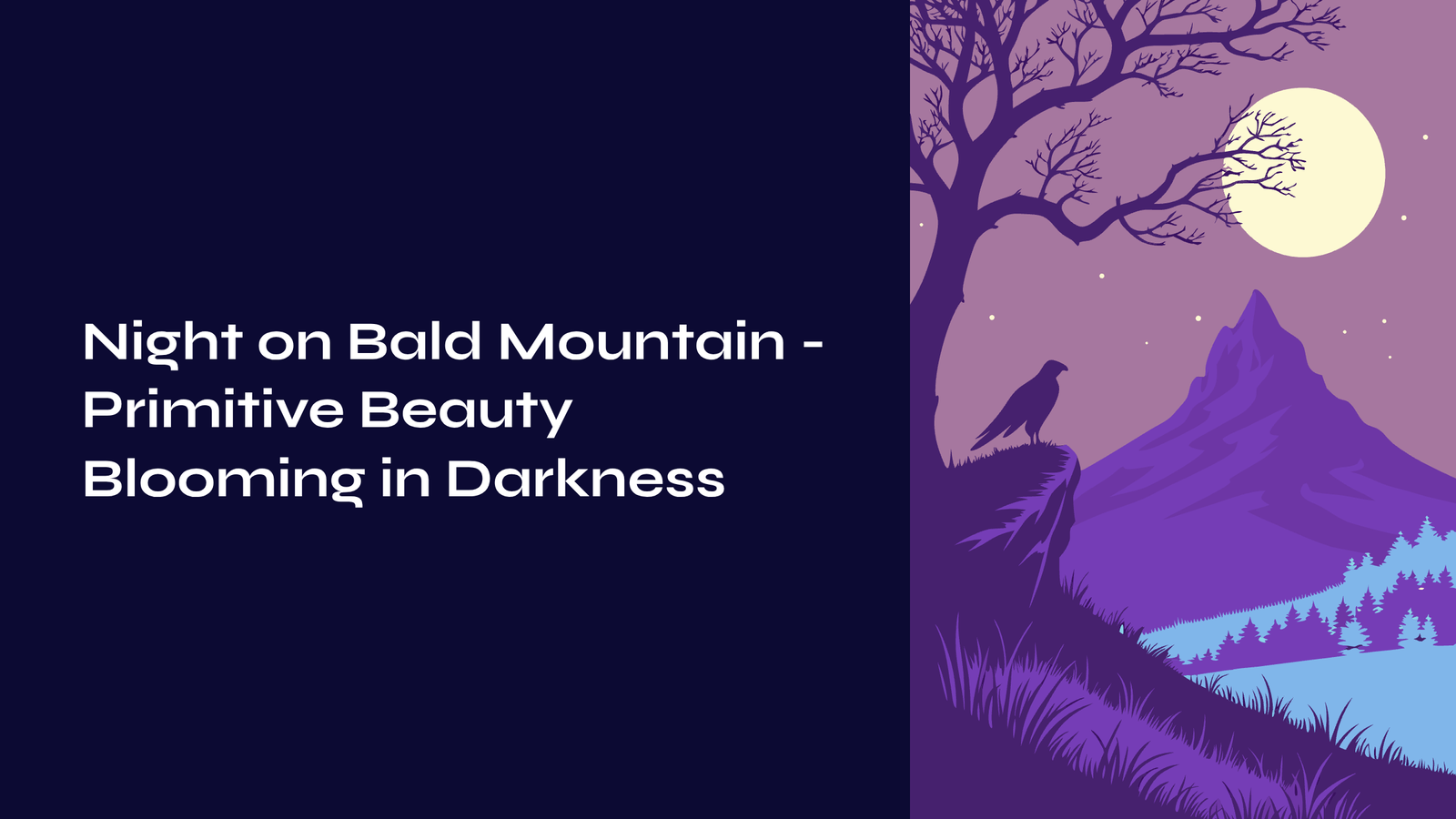
![Read more about the article Air Cooled CPU vs Water Cooled CPU: Choose the right cooling system for PCs out of 2 [Part.1]](https://rvmden.com/wp-content/uploads/2024/01/Air-Cooled-CPU-vs-300x169.png)

